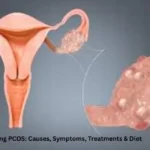Screwworm is a dangerous parasite that poses a serious threat to livestock and, in rare cases, humans. These flesh-eating larvae infest open wounds, causing severe pain, infections, and rapid tissue damage. Known scientifically for causing myiasis in animals, screwworms have historically led to massive economic losses in the agriculture industry.
Although eradicated from the USA, the risk of reintroduction remains, especially through imported animals. Understanding how screwworms live, spread, and affect their hosts is crucial for prevention and control. Farmers, veterinarians, and communities must remain vigilant to protect animals from parasitic flies and other wound-infesting parasites, ensuring herd health and food security.
What Is a Screwworm?

What are screwworms? They are a type of flesh-eating larvae that come from specific parasitic flies. Unlike normal maggots that feed on dead tissue, screwworms only eat living flesh. This makes them especially dangerous to animals and humans.
When these larvae infest a wound, they cause myiasis in animals. The female fly lays eggs in open skin, and within hours the eggs hatch into larvae. These larvae dig deep into flesh, creating painful and infected wounds in livestock.
Life Cycle of the Screwworm

The fly larvae infection starts with eggs. A female fly lays up to 500 eggs at once. These eggs hatch in less than 12 hours. The larvae feed for several days, then drop to the ground to become pupae. In one week, they turn into adult flies.
This fast cycle makes them an invasive pest species. One female can produce thousands of larvae in her lifetime. Without control, they spread quickly from one farm to an entire region.
| Stage | Timeframe | Action |
|---|---|---|
| Egg | <12 hours | Hatches into larvae |
| Larva | 5–7 days | Eats living flesh |
| Pupa | 7 days | Develops underground |
| Adult Fly | 2–3 weeks | Reproduces and spreads |
How Screwworms Infect Animals and Humans
How do screwworms spread? They spread through open wounds. Even a tiny cut can attract a female fly. Once she lays her eggs, the larvae burrow into the skin and cause deep tissue damage.
Most infections happen in farm animals, but rare cases occur in humans. For example, travelers returning to the USA with pets from affected regions have accidentally carried these animal health threats.
Common Symptoms of Screwworm Infestation

The first sign is unusual behavior in animals. They may stop eating or seem restless. Soon, you notice a wound that smells bad. Looking closer, you may see small white larvae moving inside. These are the classic symptoms of screwworm infestation.
As the larvae grow, the wound expands. The tissue around it dies, attracting more flies. Without quick care, animals can die within weeks. Farmers in the USA once lost thousands of cattle before modern treatment methods became common.
Geographic Distribution of Screwworms
The screwworm geographic distribution has changed over time. They were once common across the USA, Mexico, and Central America. Thanks to strong eradication programs, they were eliminated from the USA by 1982.
Today, they are found in South America and parts of the Caribbean. There’s always a risk they can return through imported animals. The USDA runs strict checks at borders to prevent reintroduction.
Dangers and Risks of Screwworms

The dangers of screwworms to livestock are serious. Each year, infestations cause millions of dollars in losses worldwide. Infected herds suffer from lower milk production, weight loss, and death.
The impact of screwworms on agriculture extends beyond money. They reduce food security, hurt small farmers, and increase treatment costs. Humans are not safe either, as untreated cases may cause severe illness.
How to Prevent Screwworm Infestation
Screwworm prevention methods focus on cleanliness and awareness. Farmers must keep animals healthy, clean, and free of untreated wounds. Simple steps like applying wound dressings and using repellents stop flies from laying eggs.
Another prevention step is community action. Since these are invasive pest species, one untreated farm can spread infestation to neighbors. Shared monitoring systems in rural areas help catch outbreaks early.
Treatment Options for Screwworm Case
The treatment for screwworm larvae must start quickly. Veterinarians usually remove the larvae from wounds by hand or with special medicines. After that, they clean and treat the wound with insecticides.
If not handled early, secondary infections set in. Antibiotics help prevent further damage. Farmers are advised to act immediately when they see infected wounds in livestock, as delays can be fatal.
Role of Veterinary Care in Controlling Screwworms
Veterinary care for screwworm control is the backbone of prevention. Vets train farmers to spot cases early, apply treatments, and maintain herd health. Their guidance reduces losses and keeps communities safe.
In the USA, veterinary research created modern solutions like the sterile insect technique. This breakthrough not only saved cattle industries but also became a global model for pest control.
Eradication Programs and Global Control Efforts
Screwworm eradication programs began in the USA in the 1950s. The government released millions of sterilized male flies into the wild. Since sterile males couldn’t reproduce, the population collapsed.
This sterile insect technique made the USA screwworm-free by 1982. Today, countries like Mexico, Panama, and parts of South America use the same method. Global cooperation remains key, as one outbreak can undo decades of progress.
FAQs
What does screwworm do to humans?
Screwworm larvae invade open wounds, feeding on living tissue and causing pain, infection, and tissue damage. Human cases are rare but can be severe if untreated.
How does a dog get screwworm?
Dogs get screwworms when female flies lay eggs in open wounds or sores. The hatched larvae then burrow into the tissue, causing flesh-eating larvae infestations.
What kills screwworms?
Screwworms are killed by prompt removal of larvae, veterinary-approved insecticides, and proper wound care. Ivermectin is sometimes used under veterinary supervision.
How do you know if you have screwworms?
Look for painful, foul-smelling wounds with visible larvae inside. Swelling, restlessness, and tissue damage are key symptoms of screwworm infestation.
How to treat screwworm in dogs?
Remove larvae immediately, clean the wound, apply topical insecticides, and follow up with antibiotics if needed. Veterinary care is essential for full recovery.
Is screwworm contagious?
Screwworms are not directly contagious between humans or animals. They spread when parasitic flies lay eggs in open wounds on different hosts.
Where did screwworms come from?
Screwworms are native to the Americas and were once widespread in the USA, Central America, and South America. They are considered an invasive pest species when reintroduced.
Does ivermectin treat screwworms?
Yes, ivermectin can kill screwworm larvae when administered under veterinary supervision, often alongside wound cleaning and supportive care.
Is there a vaccine for screwworms?
Currently, there is no vaccine for screwworms. Control relies on sterile insect technique, wound management, and preventive care.
Are screwworms painful?
Yes, the larvae feed on living tissue, causing extreme pain, irritation, and secondary infections in both animals and humans.
How long do screwworms live?
Adult screwworm flies live about 2–3 weeks, while larvae grow in wounds for 5–7 days before pupating in the soil.
What is the difference between a screwworm and a botfly?
Screwworm larvae feed on living tissue, while botfly larvae mostly consume dead tissue. Screwworms are more aggressive and dangerous for livestock.
Conclusion
Screwworms may be small, but their danger is huge. From causing parasite infestation to destroying farms, their impact is real. The USA’s victory shows that science, teamwork, and strong veterinary care for screwworm control can protect animals and humans. Staying alert, treating wounds early, and supporting global eradication efforts are the best defenses against this animal health threat.
Mouth Disease in Animals: Causes, Symptoms, Prevention, and Treatment




